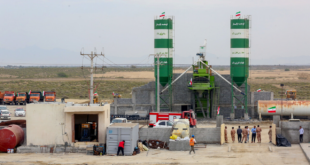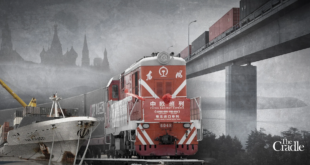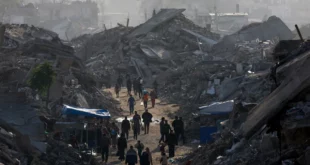Since Russia’s 2022 large-scale invasion of Ukraine, NATO militaries have been getting ready to fight. Thus far, less attention has been given to societal readiness for war, but there are signs that this imbalance is starting to be addressed.
The 2014 Russian annexation of Crimea was an insufficient wake-up call for NATO. The Eastern European members got it, but others largely dismissed Moscow’s aggression, just like in Georgia in 2008. The follow-on large-scale invasion of Ukraine in 2022 was too severe to ignore, and sparked NATO’s warfighting transformation. Its 2022 Strategic Concept finally called Russia a threat, not a partner, and committed to defending ‘every inch of NATO territory’. It has hardened its military posture, doubling its multinational battlegroups from four to eight, stretching from the Baltic to the Black Sea.
European militaries were also exposed as having been ‘hollowed out’ – the UK had no more than a week’s worth of artillery ammunition to keep it in the fight, the German Bundeswehr just two days. Therefore, the last two years of planning has focused on the military, and not society, component of warfare. Now, however, there are signs of a coordinated effort across the Alliance to engage civil society more broadly and prepare it for war.
A Call to Arms
This week, the UK Chief of the General Staff, General Sir Patrick Sanders, warned that the UK public would need to be called up to fight if war with Russia was declared, calling for the government to ‘mobilise the nation’. The General, who steps down in six months, is on the record as strongly opposing troop cuts to the Army to just 72,500 by 2025, and thus his warning could be easily dismissed as a parting shot. Moreover, while comments about conscription have been picked up by the press, his warnings are more nuanced and go beyond the service that he currently commands.
The real issue is not about conscription, nor is it necessarily about getting more civilians in military uniforms. It is about having an honest discussion with the public on the likely significant impacts that a war would have on the UK’s way of life, its functioning as a civil society and its national institutions, such as the NHS. Some of the UK’s closest allies do this as standard under a total defence model. And while the UK has its own approach to comprehensive security – through the ‘Fusion Doctrine’ – to foster a whole of society approach, General Sanders’ comments could be seen as trying to start a broader debate across UK society, and he is not alone in calling for one.
Earlier this month, Swedish Civil Defence Minister Carl-Oskar Bohlin acknowledged to a defence conference that ‘there could be war in Sweden’. The Swedish Commander-in-Chief, General Micael Bydén, went further, declaring that all Swedes needed to ‘prepare for war’. While these comments received some criticism for being alarmist, Sweden operates a total defence model, and the Swedish Civil Contingencies Agency has for many years published a brochure for its citizens titled ‘If Crisis or War comes’. Last week, Admiral Rob Bauer, Chair of the NATO Military Committee and the Alliance’s most senior military officer, warned that NATO could be at war with Russia within 20 years, which would require many civilians having to be mobilised to fight. German Defence Minister Boris Pistorius assessed that his country needed between five to eight years to be ready for war, and a leaked German military planning scenario worked on the assumption of hostilities opening with Russia as early as 2025. Recently, German policymakers have openly discussed the return of conscription, which was active from 1956 until 2011, or the introduction of some form of ‘civic service’. A similar debate has been opened in Sweden. Elsewhere, Estonian Prime Minister Kaja Kallas put the timeframe for a potential war with Russia at ‘three to five years’. Both the Norwegian Chief of Defence and Polish intelligence say three years.
There is no collective assessment of the exact timeframe, and obviously the frontline NATO members – who want more support – are likely to publicly assess a tighter deadline for readiness. However, it is striking that two years on from Russia’s invasion, in the space of a month, senior NATO politicians and commanders have started to be more honest with their electorates about the threat and its impacts, suggesting a coordinated effort to prepare society.
What Has Changed?
There is nothing obvious in open sources to suggest that the threat posed by Russia has significantly changed such as to warrant this flurry of announcements. The Russian military continues to be fully committed to combat operations in Ukraine. However, there are some potential explanations for this messaging.
Sober analysis from Ukraine continues to provide planning assumptions for NATO of what a potential future war with Russia might look like and the human capital requiredFirst, and most simply, this could be a case of a hierarchy of needs, with NATO needing to fix its military readiness first before increasing resilience and readiness in the rest of society.
Second, almost all NATO militaries, including the US, the UK and Poland, are suffering from recruitment and retention challenges. The projections for the future look bleak unless current trends are corrected. All the additional capabilities that Europeans have purchased in the last two years will not become operational unless the right number of skilled personnel exist to use them. It is a critical vulnerability.
Third, NATO is currently adopting its ‘New Force Model’ – its largest military adaption since the end of the Cold War – which has the ambition of a significantly higher number of forces available at higher levels of readiness. Moreover, its new regional defence plans and transatlantic reinforcement plans must be delivered on. In getting to the detail of the ‘executability’ of these plans, it is possible that the Allied Chiefs of Defence are concerned that they might not be enough, or that the requirement for follow-on forces will be greater – especially if there are questions about the viability of the transatlantic reinforcement plans.
Fourth, and linked to the preceding point, sober analysis from Ukraine continues to provide planning assumptions for NATO of what a potential future war with Russia might look like – which would be on a scale never previously experienced by the Alliance – and the human capital required. The situation is extremely challenging, and Valerii Zaluzhnyi, Commander-in-Chief of the Armed Forces of Ukraine, has requested that President Volodymyr Zelensky order the further mobilisation of 500,000 troops to support defensive operations this year and to prepare for subsequent military offensives in 2025 and beyond.
Fifth, now that 2024 is finally here, Europeans are becoming far more concerned by the spectre of a second Trump presidency in the US. After commanding wins in both the Iowa caucus and the New Hampshire Republican primary, he is almost certainly going to be the Republican nominee in November 2024. With his history of anti-NATO and pro-Putin comments, Europeans might finally be starting to realise that they need to do more to make up for any potential US shortfall.
The Timing is Right
Regardless of the drivers for these warnings, the timing and motive is right for several reasons. First, NATO societies have direct and recent experience of civil-military integration (CIMIC) from providing military support to civil authorities during the Covid-19 pandemic. This valuable experience of civic service must be harnessed and adapted to the current situation. An expansion of civic service would have many resilience benefits, but specifically, it would reduce pressure on the military to act as a ’fourth emergency service’, which significantly impacts military readiness for warfighting. Second, the war in Ukraine and the recent Houthi attacks on shipping in the Red Sea have directly impacted societies – increasing energy costs and causing supply chain disruption, leading to higher prices and increasing the cost-of-living – providing a more captive audience and greater public interest in international security. Third, Finland, long considered an exemplar of comprehensive security, has now joined NATO, soon to be followed by Sweden, providing deep knowledge and expertise which can and should be leveraged by the Alliance.
Yes, a public debate on conscription would be politically sensitive, but it is clear that the current approach is not working and that it is a critical national security riskIndeed, total defence models are not all created equal, and there is a variation between national approaches, reflecting history, geography, and political sensitivities. Resilience is first and foremost a national competency under NATO’s Article 3, and it should be strengthened from the ground up. The Finnish model of comprehensive security is founded on a deep history of societal resilience, developed during the Second World War and the Cold War. A high proportion of society contributes and says that it would be ‘prepared to participate’ in defence activities. The model is founded on an educational programme, which starts at school and includes national resilience and National Defence Courses that provide a total overview of Finland’s foreign, security and defence policy, with the aim of improving cooperation between different sectors of society. While the approach of one Ally cannot simply be exported to another, adaptions should be made to start this journey, and the recent senior NATO interventions should be considered as a direction to national governments to get moving. This will take time – the Finnish system has taken 80 years to develop.
A New Social Contract
Recently, the UK Defence Secretary argued that the world was becoming a more dangerous place. Indeed, the contemporary and future security challenges facing the UK will need a whole-of-society approach. However, the societal dimension cannot be transformed as easily, or as quickly, as the military component. An incremental approach is the best and most politically acceptable route. Therefore, the recent collective NATO announcements should not be seen as an overreaction, but rather as an attempt to start to set the conditions in NATO societies for further developing individual and collective systems, learning from each other, to be better prepared for the future.
It is important that this should also include a new social contract which is explicit and transparent about national security risks and the costs of both action and inaction. Moreover, it must be non-party political. Indeed, support for Ukraine and the recent UK strikes against Houthi positions in Yemen have fostered unprecedented levels of support from the opposition Labour Party at the operational level, although disagreements are still evident on policy. This may or may not involve a discussion on the pros and cons of conscription or another model of mobilisation, but it is an opportunity to start to publicly articulate why this could be necessary in the future and how it might develop. Yes, a public debate on conscription would be politically sensitive, but it is clear that the current approach is not working and that it is a critical national security risk, with the Army not meeting its recruitment targets for 14 years. Developing a new social contract will take time and a government willing to legislate in the face of public apathy or even antipathy.
Ultimately, it is an acknowledgement that defence spending will have to increase to keep the country and its people safe, as the only realistic mitigation measure against a more dangerous world. If this all sounds politically unappealing – or too costly, to NATO capitals – there is an easier and much cheaper solution: giving Ukraine what it needs to win.
 Eurasia Press & News
Eurasia Press & News




